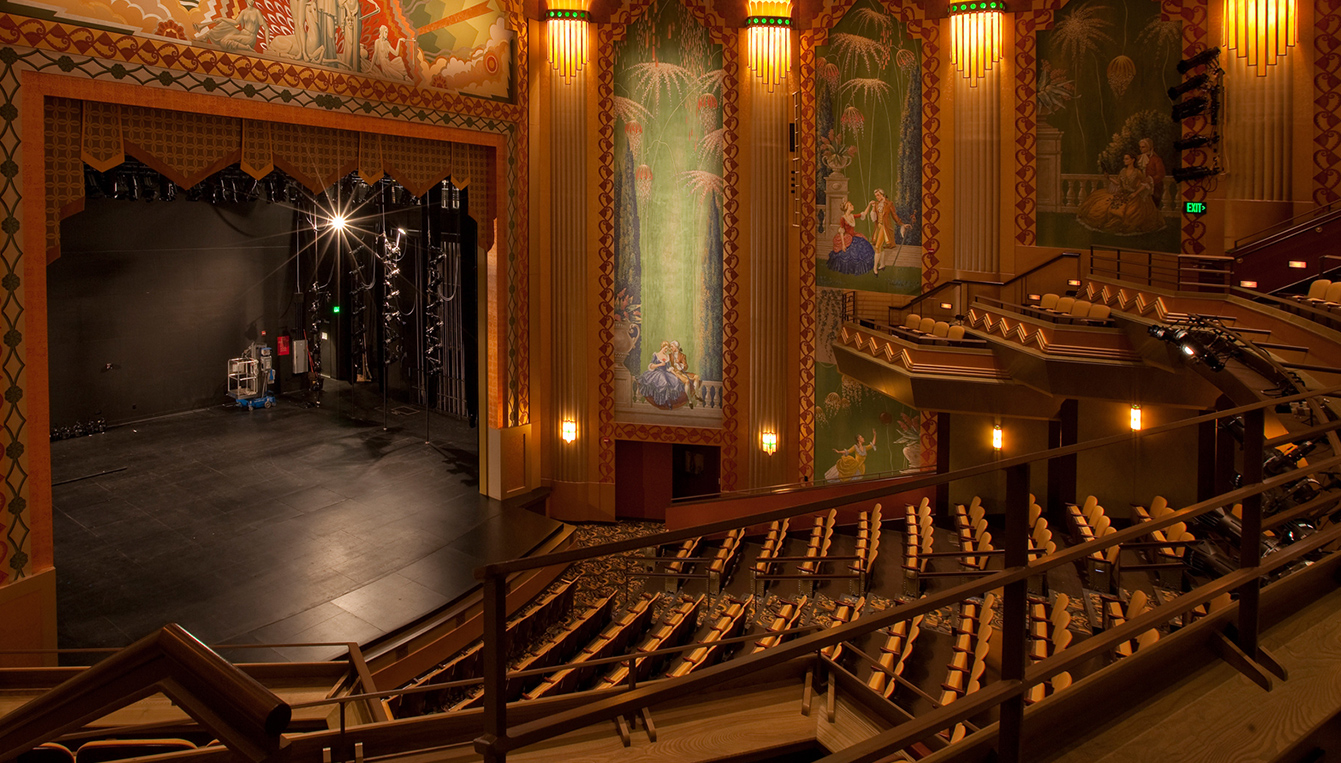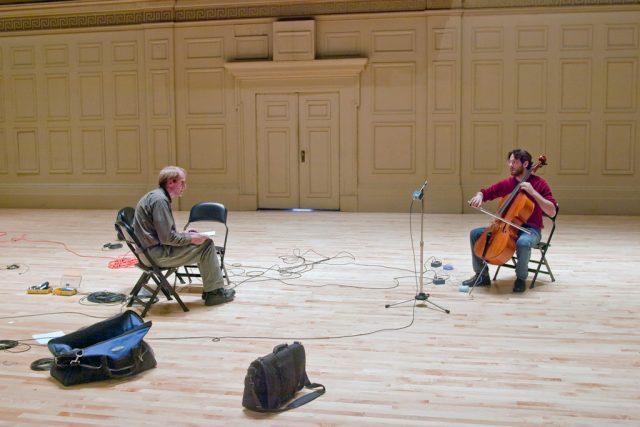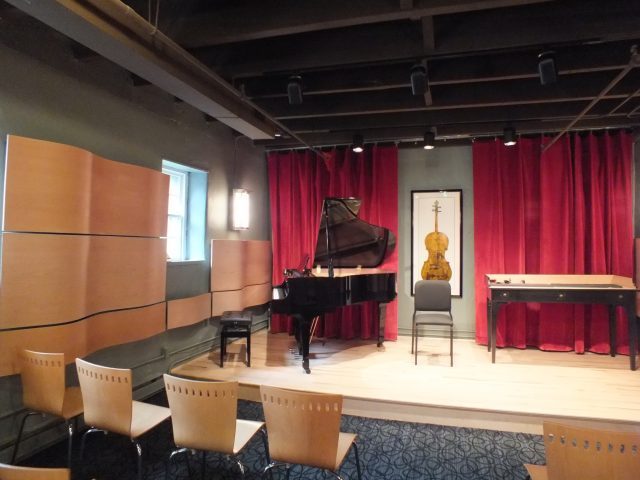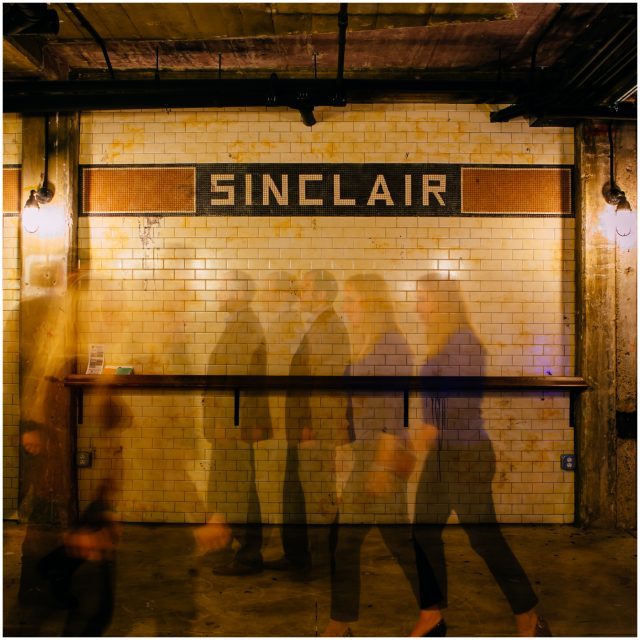Jonah Sacks
Director, Architectural Acoustics Group
Studio A | Market Co-Leader
Principal

As a concertgoer, amateur musician, and acoustics consultant, I’ve had the opportunity to know a number of music rooms as both consultant and listener, and sometimes also as performer. Most of these are in and around Boston, where I live, and where many Acentech projects (listed in bold) are located.
For orchestral music, it’s hard to beat Boston Symphony Hall for its sonority and breadth of sound. I’ll never forget performing there as a 16-year-old cellist in the Greater Boston Youth Symphony Orchestra. I don’t remember what music we played that day, but I remember the awesome sound of the hall bellowing the sound of the orchestra back to us onstage. Many years later, as a newly minted acoustics consultant, I was drafted to assist with measurements of the stage floor, which was overdue for replacement. My primary task was to play long tones on my cello, while colleagues Jim Moore, Bob Berens, and others measured the floor’s vibrational response, and once again I listened as the hall showered the sound back upon me. As a concertgoer, I’ve enjoyed hearing different music from different parts of the hall and found some favorite spots. For large, dense works like Mahler symphonies, I’m happy in the rear of the second balcony, where the sound is huge, blended, and immersive. At this position, the many reflections of the orchestra’s sound from the hard walls and ceiling fuse into a dense and surrounding reverberation. For more delicate works, like a Haydn symphony or Carter concerto, I prefer to sit closer to the orchestra – first balcony or orchestra, toward the front – where the direct sound of the orchestra is not overwhelmed by reverberation and I can hear the details more clearly. I’ll always remember watching composer Thomas Adès conduct his Scenes From The Tempest from the forward-most seats of the second balcony right, right above the basses and low brass, and watching his gestures and facial expressions while the orchestra responded attentively.

Me (right) and fellow Acentech consultant Jim Moore (left) conducting measurements at the BSO.
The downtown Paramount Mainstage is another historical Boston treasure, though it was only recently transformed into a performance hall. The sound of the room is grand and shimmering, wonderful for musical theater and opera. During design of the room, we worked to tailor the acoustics to suit these musical forms while also providing sufficient clarity for speech. The basic shape of the room – with a tall ceiling, a prominent forestage reflector, and rather steeply raked seats – is central to its acoustical design. Sound absorbing panels at the rear walls serve to moderate reverberation in hall’s large volume.

The Paramount Mainstage at Emerson College.
Around the corner at Berklee College of Music, the Red Room at Café 939 hosts a range of intimate music performances, from jazz to folk to chamber pop. Most performances in this informal 200-seat room are lightly amplified, and audiences hear both the natural and reinforced sounds of the performers. The sound system is top-notch and is operated attentively by Berklee students. I performed there with the art-pop group Jaggery several years ago, and found it refreshingly natural sounding and easy to hear my fellow musicians. The sound for audience is similarly natural: live but controlled. A mix of sound absorbing and sound reflecting surfaces at the walls and ceiling helps to achieve this balance.
Over by Fenway Park, the House of Blues offers a comfortable, clear-sounding room for larger pop and rock shows. The venue replaced the former Avalon, and what the new venue lacks in disco-glam character, it makes up for with perks like clean and plentiful restrooms, beverage bars for each section of the hall, and good sound, aided by large areas of sound absorbing material in the room’s upper volume. I recall performing on the old Avalon stage for one or two tunes with Boston art-punk mainstay Mission of Burma. Acoustically, it was a typical rock stage muddy mess. The sound engineer, longtime rocker and recording engineer Bob Weston, later confided to me that the violist and I “weren’t particularly audible.” Rest in peace, Avalon.
Who knows how many times I performed at the old TT the Bear’s Place across the river in Cambridge. It was an intimate venue that hosted many great shows by an incredible array of creative rock, punk, and weirdo bands over its many years. But few of us will miss the chaotic, muddy, too-loud sound (despite the efforts of many competent sound engineers), the appalling restrooms, and the intrusion of sound from the Middle East Club venues below and beside it. I eagerly await the arrival of Sonya’s Central Stage in its place, which will vastly improve on many of these aspects.
The leafy burb of Newton Upper Falls is home, since 2011, to Carriage House Violins and now Johnson Strings, who have united to form the largest Boston area purveyor of string instruments for students and professionals. Their recital room is the result of a happy accident, of which they took thorough advantage. An “extra” room in their space (a former mill building), it is a narrow rectangular room endowed with attractive brick, wood beams, and several windows overlooking a small river. With some acoustical guidance and thoughtful fit-out, this 50-seat room has become a wonderful venue for intimate performances by solo string players, often with piano accompaniment. It was gratifying to play my cello in the room following its renovation, and hear the improvement from the raw space. The sound that was once boomy and awkward is now smooth and natural, allowing the music to speak for itself. Following our guidance, sound-diffusing panels made from bent wood were constructed on site by the violin makers. A new wood performance platform, a sound-absorbing upstage curtain, new carpet and chairs completed the transformation.

The recital room at Carriage House Violins
The best new rock music venue in the area is, by many accounts, The Sinclair in Harvard Square. The tall room has a large flat floor and a wrap-around balcony on three sides. The room provides good sightlines from nearly all locations: a nice trick in an all-standing room. (There is a small seating section for people unable to stand.) The sound is excellent, thanks to a good loudspeaker system and copious sound-absorbing materials to control reverberation and sonic mud. Though the room can accommodate very loud performances quite well, many performances are presented at more reasonable and comfortable levels without losing impact and presence. Maybe some year I’ll get to play there.

The Sinclair in Harvard Square.